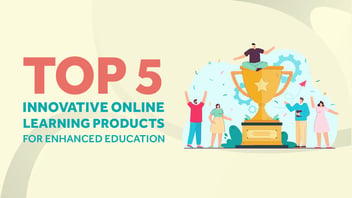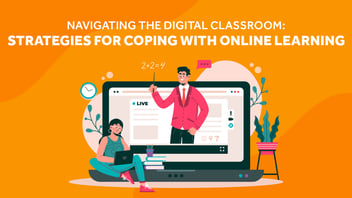Redefining Education: The Power of Digital Learning
As there has been an increase in the use of digitalisation in education, digital learning has emerged as a popular and effective way to deliver educational content to students. Digital learning provides more interactive, collaborative, and personalised learning for children, allowing them to learn at their own pace. This proves to be beneficial for students who enjoy a more positive learning experience, highlighting the immense potential that digital learning has to offer.
What makes digital learning stand out is how interactive learning becomes. The inclusion of games and quizzes can aid a child in their learning process by making it easier for them to retain information, which will boost their self-esteem. Coupled with musical and visual elements, the interactive components stimulate a student academically and creatively, leading to greater engagement and motivation. This interactivity is particularly evident in educational material online, which seamlessly integrates interactive games and quizzes into digital learning experience.
Digital learning greatly enhances a child’s learning experience through its collaborative nature. Students can raise questions when they have doubts without disrupting the flow of the class. This encourages an open and curious environment where no query is left unanswered. Online platforms offer a sense of relief to students, especially those who are shy or introverted, as they can raise questions without facing the anxiety of speaking up in front of the entire class. The virtual setting empowers students to actively participate in discussion, developing their speaking skills in the process, which will ultimately boost their confidence. Moreover, digital platforms facilitate seamless interaction with students, making it easier to share their opinions. This increased connectivity not only sparks the child’s interest, but it also cultivates confidence and self-expression.
With digital learning being at the forefront, products such as Grammar Rules!, English Oral Buddy or Science Assessment can provide students with a more personalized and interactive learning experience by leveraging technology for auto-markable quizzes, annotations, or self-assessments. Given the undeniable benefits of technology, the incorporation of artificial intelligence (A.I) can be observed across various products as it offers real-time assessments and more comprehensive tracking of a student’s progress, which can help students steer towards a direction of learning effectively. With innovative platforms like Xue Le Wang and a multitude of educational products embracing technology and A.I, it paves the way for a more effective and engaging learning experience
READ MORE: Understanding how Xue Le Wang can help children in learning Chinese!
Digital learning revoluntionises education by creating a more personalised learning experience. At its core, personalised learning seamlessly tailors educational content to a student’s proficiency level, optimizing their learning experience. This personalised approach ensures that that students receive material that is on par with their capabilities, allowing them to progress at a manageable pace while being moderately challenged. By identifying the areas that a student is weaker in, students can invest their time in areas that require more attention, which would strengthen their understanding of key concepts, hence ensuring that students are challenged appropriately and empowered to reach their full potential. Learning through digital means encourages students to become active participants in their own education, which nurtures their intrinsic motivation and passion for learning.
Digital learning significantly aids children in their learning due to greater access to resources. Through online platforms and digital tools, students can access a wide variety of educational materials, such as textbooks, videos, and interactive learning modules. This abundant availability of resources surpasses the constraints of conventional classrooms, ensuring that children have an extensive pool of readily accessible information. Along with features like search function, highlighter, bookmark, students can navigate and organize these resources easily. This enhanced accessibility makes learning efficient, nurturing students to be self-directed learners who are eager and inquisitive.

-3.png?width=352&name=MicrosoftTeams-image%20(1)-3.png)

